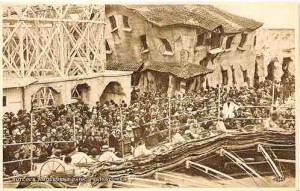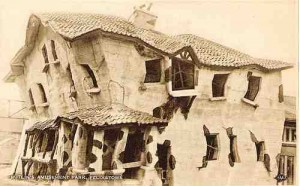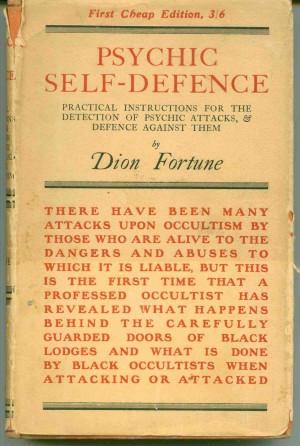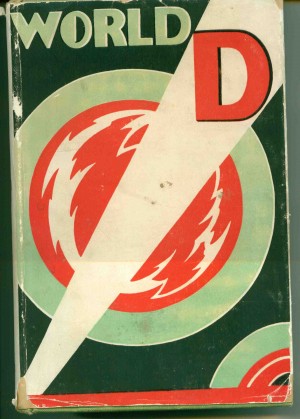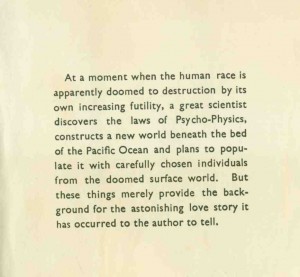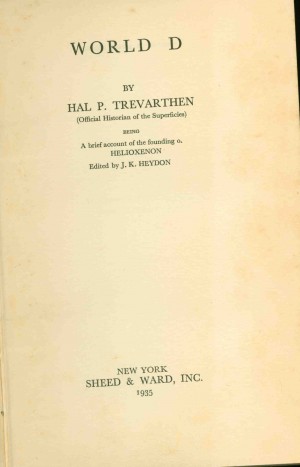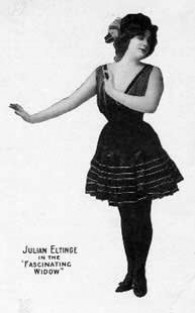1930s
Soggy, Mushy and Toughy
Who needs Iron Man or The Dark Knight, when you can watch Snap, Crackle and Pop battle their evil counterparts?
Posted By: Paul - Mon Dec 01, 2008 -
Comments (6)
Category: Business, Advertising, Food, Movies, Cartoons, Children, 1930s, Fictional Monsters
Butlin’s Crazy House
Old amusement park attractions are inevitably weird.
Consider the Crazy House once to be found in Felixstowe, UK.
These old postcard images come from the Flickr set of a fellow who uses the handle Photoaf.
The house was part of a Butlin's Amusement Park. For the history of the founder, Billy Butlin, eventually knighted for his recreational achievements, visit here.
Wouldn't you have loved to experience this park during its heyday, some seventy years ago?
Posted By: Paul - Tue Nov 25, 2008 -
Comments (4)
Category: Architecture, Buildings and Other Structures, Entertainment, Fairs, Amusement Parks, and Resorts, History, Photography and Photographers, Surrealism, Foreign Customs, 1930s
Follies of the Mad Men #42
Yet another "disease" that Madison Avenue tried to foist upon the public.
[From Fortune magazine for December 1936.]
Posted By: Paul - Mon Nov 10, 2008 -
Comments (5)
Category: Business, Advertising, Products, Furniture, 1930s, Disease
Aristocrats of Fashion
Do you have enough Bemberg rayon clothes in your wardrobe? If not, watch this!(But be warned! Only a partial video remains to us down the ages. You'll never get to see the implied all-rayon wedding.)
Posted By: Paul - Tue Sep 30, 2008 -
Comments (3)
Category: Business, Advertising, Products, Fashion, 1930s, 1940s
Follies of the Mad Men #31
Product placement in entertainment media is nothing new. Here's how the classic fairytale of Cinderella can be improved by the addition of a Chevrolet.
Posted By: Paul - Mon Sep 29, 2008 -
Comments (2)
Category: Business, Advertising, Movies, Cartoons, Myths and Fairytales, Marriage, 1930s, Dance, Cars
Dion Fortune
Collecting novels of the fantastic as I do, I eventually and inevitably came across those of Dion Fortune, and bought a few. To this day, they remain untracked by my eyes. Nonetheless, I was sensitized to her name, and could spot her non-fiction selection Psychic Self-Defence readily on the shelf of a used-book store and snatch it up. A bargain at $5.00, I'm sure!I haven't read it yet, but I'm much looking forward to learning how to protect myself against various types of intrusive mind assaults. Sample a few pages yourselves below.
And thanks to Google Books, you can read the whole thing online here.
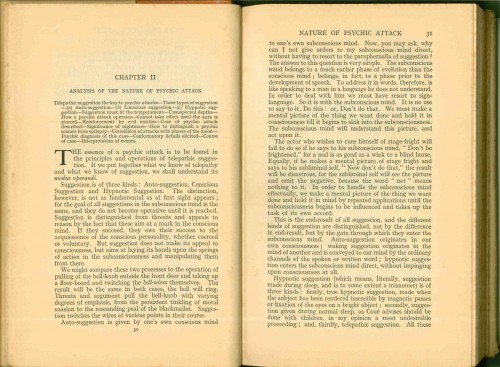
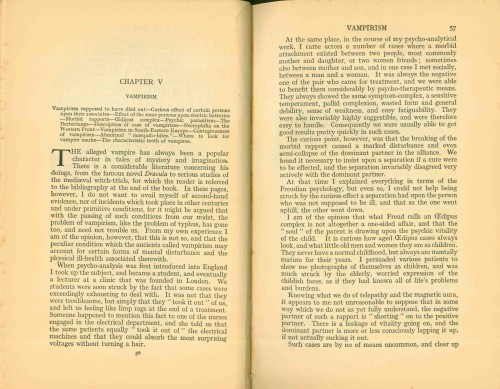
Posted By: Paul - Fri Sep 26, 2008 -
Comments (8)
Category: New Age, Paranormal, Self-help Schemes, Psychology, Books, 1930s
World D
Here's another strange book I purchased but have not yet read. The real author is Joseph K. Heydon, using the pen-name of Hal Trevarthen. Time has swallowed up all details related to Heydon and his book, leaving us only with the text itself.Here's the description from the amazingly ugly dustjacket.
Here's the title page, followed by a sample of the actual bafflegab inside.
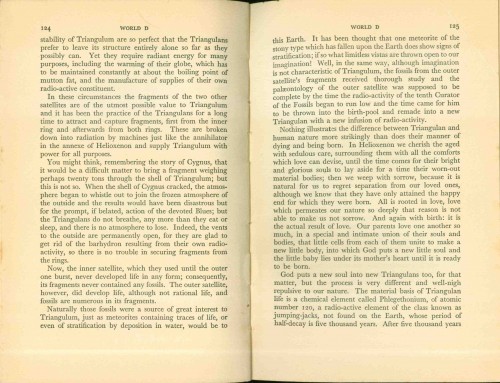 Posted By: Paul - Thu Sep 11, 2008 -
Comments (11)
Posted By: Paul - Thu Sep 11, 2008 -
Comments (11) Category: Aliens, Eccentrics, Government, Inventions, Literature, Books, Science Fiction, Writers, Nature, New Age, Paranormal, Pop Culture, Science, Psychology, Self-help Schemes, Foreign Customs, 1930s, Yesterday’s Tomorrows
Julian Eltinge
Every election year, politicians seek to invoke a mythical Golden Age, when life was simpler and more wholesome. Take the Edwardian Era in America, for instance, when the moral fiber of the country was still unpolluted----and when a drag queen like Julian Eltinge was a top attraction in high society and popular culture alike.
Face it: life was never any different.
Posted By: Paul - Wed Aug 06, 2008 -
Comments (3)
Category: Celebrities, Eccentrics, Entertainment, Government, History, Historical Figure, Hollywood, Sexuality, Gender, Gender-bending, Men, Theater and Stage, Vaudeville, 1900s, 1910s, 1920s, 1930s, 1940s
Magic Cheese Chips
They admit it's "decidedly unusual," but I think it would sure beat stuffing envelopes. "Simply drop into hot grease and they're ready to eat -- big, tasty, crispy, delicious!" Question: What makes them magic?From the July, 1934 issue of Modern Mechanix. (via J-Walk)
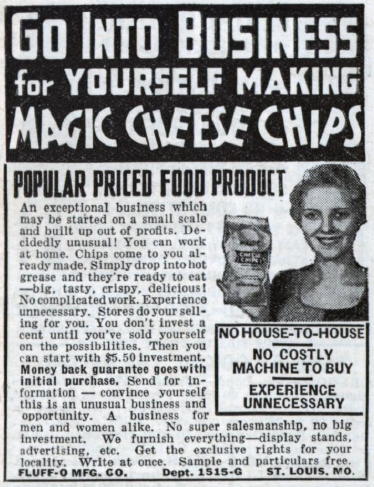
Posted By: Alex - Tue Aug 05, 2008 -
Comments (3)
Category: Business, Advertising, Food, 1930s
The White Castle Experiment
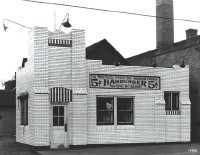
However, the idea of conducting a fast-food diet experiment wasn't original to Spurlock. That honor goes to Jesse McClendon, a researcher at the University of Minnesota, who in 1930 fed a volunteer a diet of only White Castle hamburgers for 13 weeks. From the U of M Medical Bulletin:
A willing subject presented himself: Bernard Flesche, a U of M medical student working his way through school. Flesche kept a diary during the ordeal. "He started out very enthusiastic about eating 10 burgers at a sitting," notes his daughter, Deirdre Flesche, "but a couple of weeks into it, he was losing his enthusiasm." His sister frequently tried to tempt him with fresh vegetables, but Flesche allowed nothing but White Castle Slyders™ to pass his lips.
Flesche survived his ordeal without developing any significant health problems. The owner of White Castle interpreted this to mean that a hamburger diet is healthy and heavily promoted the experiment in advertisements. Flesche, however, who had once been a hamburger lover, developed a permanent aversion to them. He never willingly ate a hamburger again.
Posted By: Alex - Mon Aug 04, 2008 -
Comments (0)
Category: Food, Experiments, 1930s

| Who We Are |
|---|
| Alex Boese Alex is the creator and curator of the Museum of Hoaxes. He's also the author of various weird, non-fiction, science-themed books such as Elephants on Acid and Psychedelic Apes. Paul Di Filippo Paul has been paid to put weird ideas into fictional form for over thirty years, in his career as a noted science fiction writer. He has recently begun blogging on many curious topics with three fellow writers at The Inferior 4+1. Contact Us |

